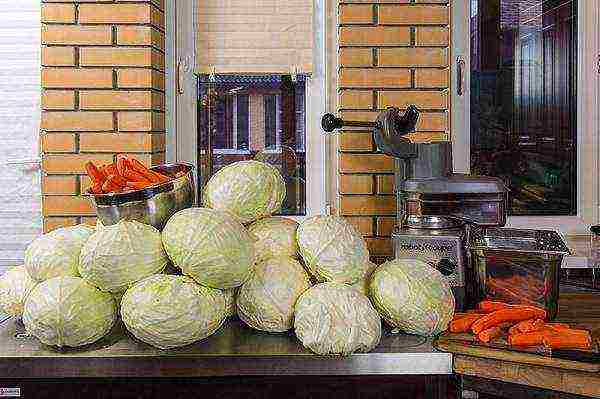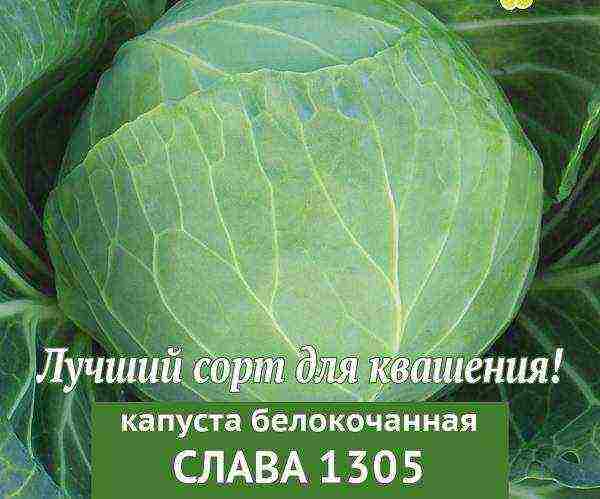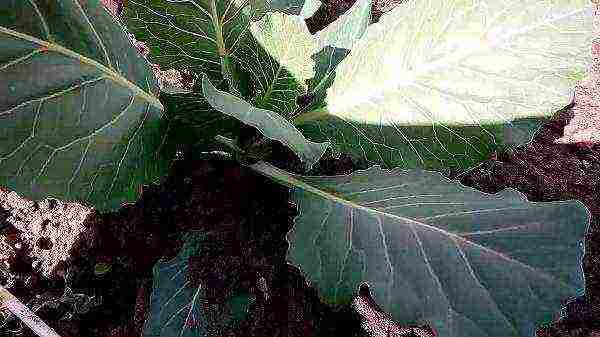Detailed description of the cabbage variety Slava
Cabbage is one of the most common agricultural crops. Currently, there are several varieties of this vegetable. Each variety has its own advantages and disadvantages. Today the most popular species is considered to be Slava cabbage. And this is not surprising, its cultivation and yield characteristics are several times superior to other crops.
Description and characteristics of the Slava variety
Slava is one of the old, mid-season varieties of white cabbage. The plant was obtained in the last century, at the All-Russian Scientific Research Institute of Vegetable Breeding. The author was EM Popov, who, when crossing foreign samples, bred two subspecies of the Slava variety: Gribovsky 231 and 1305. In 1940, these varieties were zoned into all regions of Russia, where, due to their positive qualities, they gained great popularity.
The general characteristics of this variety are density, juiciness and yield. Heads of cabbage are attractive, rounded or slightly flattened. The outer leaves are light green in color, with a slight waxy bloom, wavy along the edge. The internal structure of the forks consists of crisp white leaves. Each subspecies is perfectly used both fresh and processed. They differ only in the following indicators:
- Gribovsky 231. The ripening period of this subspecies falls on 100 - 110 days, after germination. The average weight of a fork is about 3 kg. Productivity from 1 sq. m. reaches 9 - 10 kg.
- Glory 1305. Forks of this variety form 2 weeks later than their subspecies. However, their weight is about 9 kg. The yield is also higher and reaches 12 kg. from 1 sq. m. But here it is worth noting that Slava 1305 forks are less dense and are stored worse.

Cabbage of this variety is also famous for its taste and useful properties. Its fruits contain a large amount of vitamins and minerals.
Advantages and disadvantages of the variety
Initially, breeders tried to develop a vegetable crop for the regions of Russia, where non-chernozem soil predominates. But thanks to the endowed qualities, the vegetable is cultivated in all regions of the Russian Federation. Here is a description of the main advantages of the variety:
- frost resistance;
- consumer qualities;
- unpretentiousness to the soil;
- resistance to cracking;
- good transportability.
Despite such a mass of positive qualities, the plant still has its drawbacks. Negative qualities include: instability to the root keel and not long shelf life of fruits.

Planting dates for seedlings
You can grow Slava cabbage in a seedling and seedless way. In the first case, the seeds of the plant are sown in boxes in early April. To implement the seedless method, seeds are planted in open ground in the third decade of April.
Regardless of which method is chosen, it is recommended to prepare the seeds before planting. It is carried out according to the following scheme:
- For 10 - 15 minutes, the seeds of the plant are placed in water at a temperature of 55 - 60 ° C.
- Then, they are dipped in cold moisture for 1 minute.
- Next, the seeds are poured for 12 hours with a solution prepared from 10 liters of water and 12 grams. potassium humate.
- After this time, they should be dried and placed in a cool place at a temperature of 1 - 2 ° C.
A day later, they are ready for landing.
Sowing rules
As a rule, Slava cabbage is more often planted in seedlings. For this purpose, earth is poured into prepared boxes, 5 - 6 cm deep. Having tamped it well, it is disinfected with a manganese solution. After 3 days, grooves are made in the boxes at a distance of 3 cm, 1 cm deep. Further, in 1 cm steps, seeds are sown, which must be sprinkled with earth and watered with a drip method. Then, before the first shoots appear, the boxes are placed in a warm place, with a temperature regime of 18 - 20 ° C. As soon as the first shoots appear, the container is transferred to the windowsill, which should be well illuminated by the sun's rays and have an air temperature of 10 - 12 ° C.
After the seedlings have 5 strong leaves, they are transplanted into open ground.
- Selection of seeds for sowing for seedlings
- Seedling cabbage
Soil requirements for planting
Slava cabbage can grow on all types of soil. But, according to the recommendations of experts, the best yield indicators are possible on fertile loamy soils, with a close location of groundwater. The best option is considered to be the pH of the acidity of the earth - 6.7 - 7.4.
It is advisable to plant cabbage in those places where they grew before:
- cucumbers;
- carrot;
- legumes;
- potato;
- cereals.
Bad predecessors are:
- tomato;
- beet;
- radish.
It is also not recommended to plant cabbage on the same site every year. The interval between plantings should be 3-4 years.
Variety care after planting
Many novice vegetable growers, when transplanting cabbage, make irreparable mistakes, which, as a result, lead to the formation of a flower shoot. To avoid this, it is categorically impossible to allow:
- dense planting of seedlings;
- shading of the landing site;
- excess moisture.

In order for a vegetable crop to develop correctly in the open field, it is necessary to carry out agrotechnical work in a timely manner. Care includes:
- Watering. Cabbage is a moisture-loving culture, so it should be irrigated at least 7 - 8 times a month.
- Loosening. In order for the plant to receive a sufficient amount of oxygen, after each watering, it is necessary to mulch the soil.
- Hilling. This procedure will promote the formation of root shoots, due to which the vegetable will receive more nutrients.
- Top dressing. To obtain additional microelements, nitrogen fertilization is recommended 2 weeks after planting. During the formation of forks - phosphorus and potassium minerals.
But, despite the observance of all agrotechnical works, various diseases can also lead to a decrease in yield or its complete absence.
Diseases and their prevention
To reduce the risk of plant death, it is necessary to carry out disease prevention in a timely manner. The following table will help to correctly identify the disease in the initial stages and find out the measures to combat it.
| Name of the disease | Symptoms | Prevention and control methods |
| Cabbage keel | Different types of growths are formed on the root of the plant. | Before disembarking, the landing site is treated with lime, in a ratio of 1 kg. by 4 sq.m. |
| Peronosporosis | Spots of yellow and gray appear on the tops of the leaves, and white bloom on the underside. | For prevention, soil is disinfected. In case of illness use the drug "Fitoftorin". |
| Fusarium | The leaves of the plant turn yellow and dry completely. | Infected plants are removed by the root, and the planting site is treated with benzimidazole systemic fungicides. |
Insect pests are often the causative agents of infection.Therefore, when they first appear, the plant is treated with chemicals.
- Cabbage leaves prone to fusarium
- Keela of cabbage roots
- Cabbage leaf with Peronosporosis
Harvesting and storage rules
Fruit ripening occurs gradually. The cabbage harvest begins at the end of July and lasts for 2 weeks.
Damaged and cracked forks are used for fermentation, whole fruits are left for storage.
The vegetable culture is stored in the cellar in the following ways:
- hanging from the ceiling;
- laying in a checkerboard pattern on clean dry boards;
- placing in lattice boxes.
Regardless of the method chosen, before sending the heads of cabbage to the cellar, they must be well dried and wrapped in clean paper.
On average, fruits are stored for about 3-4 months. To increase the shelf life, the temperature in the cellar should be kept close to 0 ° C, and the air humidity should be at least 90%.
Having considered all the positive qualities, planting methods and cultivation features, you can independently make sure that Slava cabbage is not a whimsical plant. Subject to all the recommendations, this vegetable crop is able to please every vegetable grower with a rich, tasty and healthy harvest.


